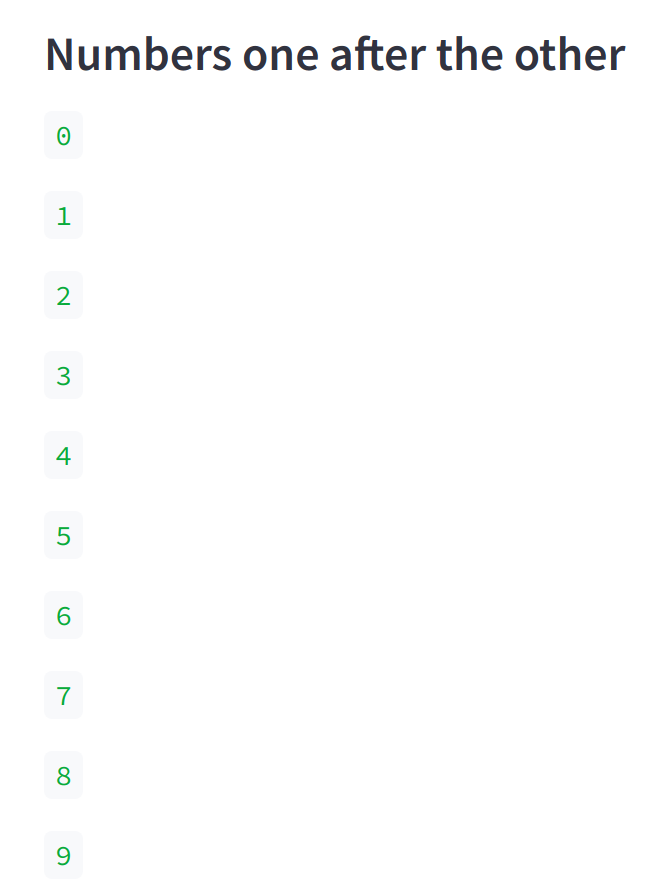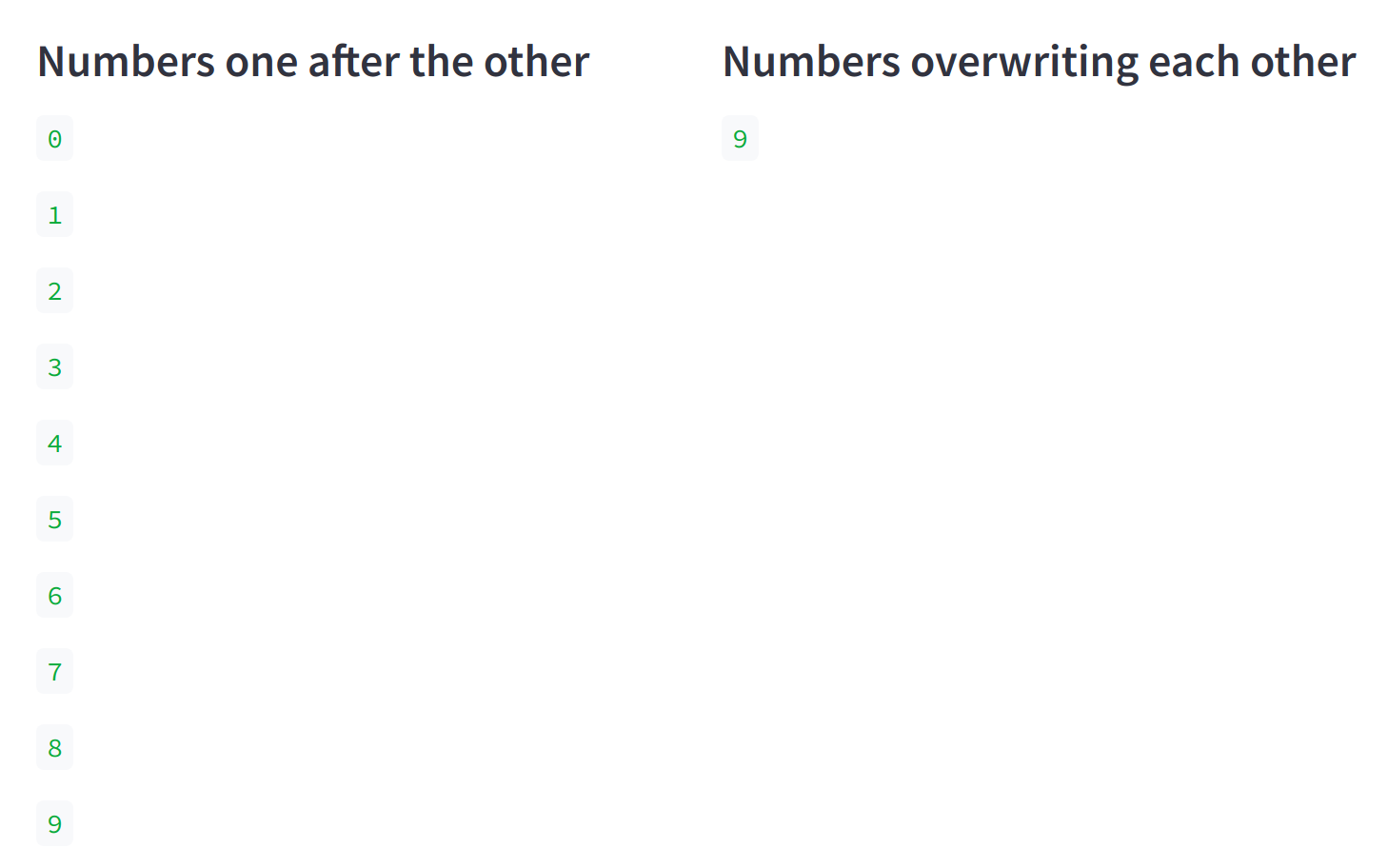Streamlit: Overwrite previous value in a loop
I was recently building a Streamlit app in which I was looping through a stream of values and wanted to only print out the most recent value. In this blog post we’ll learn how to do that.

Setup
If you want to play along you’ll need to create a virtual environment and install Streamlit:
python -m venv env
source venv/bin/activate
pip install streamlitStreamlit App
Now, create a file app.py that contains the following:
import streamlit as st
st.markdown("#### Numbers one after the other")
for i in range(0,10):
st.write(i)And run the following command from the terminal:
streamlit run app.pyIf we run this command it will open a web browser at http://localhost:8501, and we’ll see the following output:

The numbers are all printed out, which isn’t exactly what we want. In this example we’re only printing out 10 numbers, but if we had a bigger stream of values it would eventually crash the browser!
Instead we can use a single element container (st.empty) and populate that on each loop.
Let’s update app.py to look like this:
import streamlit as st
left, right = st.columns(2)
with left:
st.markdown("#### Numbers one after the other")
for i in range(0,10):
st.write(i)
with right:
st.markdown("#### Numbers overwriting each other")
numbers = st.empty()
for i in range(0,10):
with numbers.container():
st.write(i)Now if we go back to our Streamlit app, we’ll see the following:

We can only see the number 9 because that’s the last value that got printed.
If we want to see how the output progresses, we’ll need to pause the loop for a little bit after each iteration.
Update app.py to look like this:
import streamlit as st
import time
left, right = st.columns(2)
with left:
st.markdown("#### Numbers one after the other")
for i in range(0,10):
st.write(i)
with right:
st.markdown("#### Numbers overwriting each other")
numbers = st.empty()
for i in range(0,10):
with numbers.container():
st.write(i)
time.sleep(0.5)And now if we refresh the page, we’ll see it update like this:

Exactly what I wanted - good work Streamlit!
About the author
I'm currently working on short form content at ClickHouse. I publish short 5 minute videos showing how to solve data problems on YouTube @LearnDataWithMark. I previously worked on graph analytics at Neo4j, where I also co-authored the O'Reilly Graph Algorithms Book with Amy Hodler.
